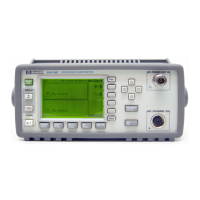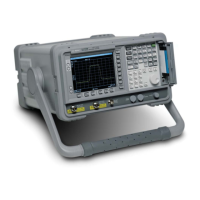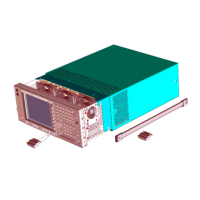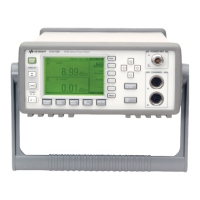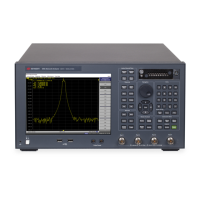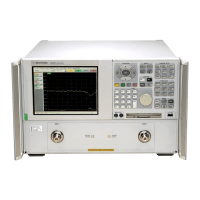Chapter 3 47
Making Fault Location Measurements
Basic Measurement Procedures
Setting Window
Because the E5061A/E5062A transforms data within a finite frequency domain to
data in distance or time domain, unnatural change of data at the end points within
the frequency domain occurs. For this reason, the following phenomena occur.
• The width of the impulse signal and the rise time of the step signal
The time width occurs in the impulse signal and the rise time occurs in the step
signal.
•Sidelobe
Sidelobes (small peaks around the maximum peak) occur in the impulse signal
and the step signal. Ringing occurs on the trace due to sidelobes, which reduces
the dynamic range.
By using the window function, you can lower the level of sidelobes. However, the
width of the impulse and the rise time of the step become larger as a penalty. You
can select from 3 types of windows: maximum, normal, and minimum. The
following table shows the relation between the window and the sidelobe/impulse
width.
Table 3-3 Characteristics of window
The window function is available only when the response in time domain is
displayed. It dose not have any effect when the response in frequency domain is
displayed.
Operation
Step 1. Press (or ) and (or ) to activate a
trace for which you want to set the window.
Window
Sidelobe level of
impulse signal
Width of the impulse
(50% in low pass
mode
a
)
a. The value in the band pass mode is 2 times the value in the low pass mode.
Sidelobe level of the
step signal
Rise time of the step
signal (10-90%)
Minimum -13 dB 0.60/frequency span -21 dB 0.45/frequency span
Normal -44 dB 0.98/frequency span -60 dB 0.99/frequency span
Maximum -75 dB 1.39/frequency span -70 dB 1.48/frequency span
